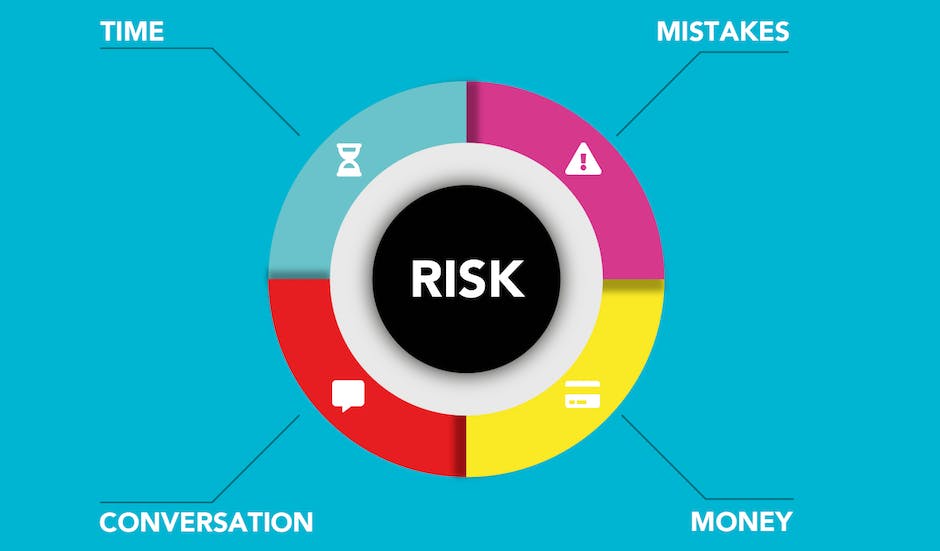Crucial Guide to Selecting Best Currency Pairs in Forex Trading.
In the world of financial trading, Forex trading stands out as one of the most popular and lucrative activities. With a market that runs continuously 24 hours a day, offering great liquidity and the opportunity to trade on both rising and falling markets, it’s no wonder that many individuals turn to this exciting world of foreign currency trading. However, while the promise of great rewards is evident, the path to success is paved with intricacies and complexities that need careful navigation. This includes making informed decisions on choosing the ideal currency pairs to trade with. To achieve this, understanding the core principles of Forex and currency pairs, identifying the factors that influence these pairs, gaining insights into top currency pairs, employing robust analysis techniques, and implementing keen risk management strategies are crucial.
Understanding Forex Trading and Currency Pairs
Basics of Forex Trading
Forex trading, also known as foreign exchange trading or currency trading, involves the buying and selling of currencies on the foreign exchange market with the aim of making a profit. The forex market is the largest financial market in the world, with a daily volume of more than $5 trillion. The currencies are traded in pairs, meaning that one currency is bought while another is sold.
Role of Currencies and Concept of Currency Pairs
In forex trading, currencies play the major role. The value of a particular currency is determined by its comparison to another currency. This comparison is termed as ‘currency pair‘. A currency pair consists of two currencies – the base currency and the quote currency. The base currency is the first currency in a pair while the quote currency is the second. For instance, in the EUR/USD currency pair, EUR is the base currency and USD is the quote currency.
Base Currency and Quote Currency Dynamics
The rate or price quoted for a currency pair represents the amount of quote currency needed to buy one unit of the base currency. If EUR/USD is quoted as 1.20, it means that 1 Euro (base currency) is equivalent to 1.20 US dollars (quote currency). In forex trading, you profit when the value of the base currency rises against the quote currency and lose when the value of the base currency falls against the quote currency.
Picking the Ideal Currency Pairs for Forex Trading
Selecting the top-tier currency pairs for forex trading tends to vary according to personal trading approaches, risk capacity, and understanding of the market. However, there are certain pointers that can assist traders in making their choice:
- Liquidity: Typically, currency pairs with greater liquidity have narrower spreads, leading to potential reductions in transaction expenses. The most liquid currency pairs tend to be the major pairs involving the U.S. dollar, including but not limited to EUR/USD, USD/JPY, and GBP/USD.
- Volatility: Some traders have a preference for high volatility currency pairs since they provide more trading possibilities. However, traders should bear in mind that such pairs also entail higher risk.
- Trading Session: The liquidity and volatility of certain currency pairs get influenced by the trading session. For example, the EUR/USD pair usually experiences an increase in volatility during the European and U.S. trading sessions.
- Economic Elements: Economic statistics like inflation, interest rates, and GDP growth may impact a currency’s value. Traders with a strong understanding of these factors can leverage them to anticipate future currency trends and choose their currency pairs strategically.
Summing up, there’s no universally ‘best’ currency pair for forex trading, with traders’ choices varying in response to risk appetite, market strategy, and market comprehension. Successful forex trading requires ongoing learning and practice and staying abreast of the dynamics impacting the forex market.

Factors Influencing Currency Pairs
Digging Deeper into Liquidity in Forex Trading
An important consideration when deciding on currency pairs for forex trading is liquidity. Liquidity indicates how easy it is to purchase or sell a particular currency without causing a significant impact on its price. Currency pairs that enjoy a high volume of trades are more liquid. This high liquidity is advantageous for traders since tighter spreads usually follow, potentially leading to savings on transaction costs.
The most frequently traded currency pairs, hence the most liquid, encompass the key world currencies such as the U.S. dollar (USD), the Euro (EUR), the Japanese yen (JPY), the British pound (GBP), the Australian dollar (AUD), the Canadian dollar (CAD), and the Swiss franc (CHF). Pairs such as EUR/USD, USD/JPY, and GBP/USD are typical examples of heavily traded and highly liquid pairs.
Importance of Volatility
Volatility is another crucial factor to consider when choosing currency pairs for forex trading. Volatility refers to the rate at which the price of an asset increases or decreases for a set of returns. Currency pairs with higher volatility offer greater variability, creating more opportunities for traders to make profits.
However, more volatility also equals higher risk. Therefore, a trader must consider their risk appetite when choosing which currency pairs to trade. Currency pairs involving emerging market currencies often have higher volatility due to political or economic instability, but they also come with higher risk.
Considering Spread in Forex Trading
The spread refers to the difference between the buying price and the selling price of a currency pair offered by a broker. The cost of trading is directly affected by the spread as forex brokers typically make their profits through this difference. Therefore, currency pairs with lower spreads are generally more desirable.
Major currency pairs typically have the lowest spreads due to their high liquidity. Again, pairs such as EUR/USD, USD/JPY, and GBP/USD are popular choices because their spreads tend to be lower, making them less expensive to trade.
Political and Economic Stability
Political or economic stability plays an integral role in the strength of a currency and, therefore, can influence a trader’s desire to trade a specific pair. Countries that have stable political and economic conditions generally have a stronger currency as they provide safer environments for investment.
Major currencies, coming from countries with mature political and economic systems, generally offer more stability. However, it’s essential to keep up-to-date with world news as geopolitical events, like elections, wars, economic recessions, or policy changes, can significantly impact the strength of a currency.
Choosing Currency Pairs in Forex Trading
When venturing into forex trading, it’s essential to select your currency pairs carefully. Factors such as liquidity, volatility, spread, and the political and economic stability of the countries involved play a pivotal role in this process. These elements not only contribute to the risk involved but also directly impact the profitability of your trades.

Top Currency Pairs for Forex Trading
Deciphering the ‘Majors’ in Currency Pairs
In the realm of forex trading, seven currency pairs hold the designation of ‘majors.’ This grouping consists of the Euro/Dollar (EUR/USD), Dollar/Japanese Yen (USD/JPY), Pound Sterling/Dollar (GBP/USD), Aussie Dollar/U.S. Dollar (AUD/USD), Dollar/Canadian Dollar (USD/CAD), the Swiss Franc/U.S. Dollar (CHF/USD), and the U.S. Dollar/New Zealand Dollar (NZD/USD). The significance of these pairs arises from the countries they represent – the world’s most sizable and influential economies. This list includes the United States, Eurozone (primarily Germany and France), Japan, the United Kingdom, Australia, Canada, Switzerland, and New Zealand.
The robust economic stability and large trading volumes of these nations result in the ‘majors’ being highly volatile and liquid. Consequently, these pairs typically offer the narrowest spreads, making them less costly to trade than pairs tied to smaller economies.
The ‘Minors’ Currency Pairs
In contrast to the ‘majors,’ ‘minors’ or ‘crosses’ are currency pairs that do not include the U.S. Dollar. Some of these pairs involve major economies, including the Euro, Japanese Yen, British Pound, and other significant economies like the Australian and Canadian Dollar. Major ‘minors’ include the Euro/Pound (EUR/GBP), Euro/Yen (EUR/JPY), and Pound/Yen (GBP/JPY). These pairs may offer additional opportunities for trading, but they usually have higher spreads and lower liquidity than ‘majors.’
The ‘Exotic’ Currency Pairs
‘Exotic’ currency pairs consist of a major currency paired with a currency from a smaller or emerging economy, such as South Africa, Denmark, or Mexico. Examples include the U.S. Dollar/Turkish Lira (USD/TRY) and Euro/Czech Koruna (EUR/CZK). Even though these pairs might present higher potential for profit due to their greater price swings, they also carry additional risks. These pairs usually have higher spreads, are less liquid, and are more susceptible to market manipulation or intervention by government institutions.
Factors that Influence the Choice of Currency Pairs
When choosing the best currency pairs for forex trading, you need to assess various factors. The economic stability, political condition, and overall trading volume of the countries represented by the currencies impact the currency pair’s performance. Economic announcements, interest rate changes, and geopolitical events can create profitable trading opportunities but can also add to the volatility of the pair.
Other considerations include the time of day that you will be trading. Certain pairs are more active during specific market hours, so you need to choose pairs that align with your available trading times. For example, if you plan to trade during Asian session hours, then pairs involving Asian currencies like the Japanese Yen or Australian Dollar could be the best choice. Lastly, it is crucial to consider the spread costs, the difference between the bidding price and asking price, and the currency pair’s liquidity.
Selecting Effective Currency Pairs for Forex Trading
When aiming to select the most appropriate currency pairs for forex trading, an ideal strategy is initiating with ‘major’ pairs. Major pairs are advantageous due to their high liquidity, minimal spreads, and lower risk factor. With increased acumen and understanding of the forex markets, you can consider broadening your trading portfolio by incorporating ‘minor’ or ‘exotic’ pairs. Accurate interpretation of global economic and political happenings can offer valuable insights into potential price alterations, while a good grasp of your trading schedule can aid in the selection of suitable pairs during busy market periods. Lastly, maintaining a balanced variety of currency pairs in your portfolio is a wise tactic for efficient risk management.

Analysis Techniques for Selecting Currency Pairs
Identifying Optimal Currency Pairs for Forex Trading
Forex trading encompasses the concurrent buying and selling of currencies. Although the forex market holds a plethora of currency pairs, they may not all prove advantageous for each trader. Hence, it is essential to pinpoint the pairs that align best with your unique trading tactics and preferences.
Understanding Forex Market Pairs
In Forex trading, currencies are traded in pairs. This system allows traders to ascertain the value of one currency compared to that of another. These pairs are categorized into the major, minor, and exotic pairs depending on their liquidity and spreads.
The major currency pairs involve the currencies of the world’s largest economies and are the most traded on the forex market. These include pairs such as EUR/USD (Euro/United States Dollar), GBP/USD (British Pound/United States Dollar), and USD/JPY (United States Dollar/Japanese Yen).
Minor or cross pairs account for significant portions of forex trading but do not include the US Dollar. Examples of these are EUR/GBP (Euro/British Pound), and EUR/JPY (Euro/Japanese Yen).
Exotic pairs involve currencies from emerging economies or smaller economies. They are not as frequently traded, have less liquidity, and generally come with higher spreads. An example is USD/TRY (United States Dollar/Turkish Lira).
Fundamental and Technical Analysis
Choosing the best currency pair for Forex trading involves a combination of fundamental and technical analysis. Fundamental analysis involves examining economic indicators such as inflation, interest rates, and GDP. Using fundamental analysis, traders evaluate the overall health of an economy and make predictions about future currency valuations.
Technical analysis, on the other hand, uses historical data and chart patterns to predict future movements. Traders look at trends, patterns, and indicators on charts to identify trading opportunities. Choosing the right currency pair involves understanding these various charting techniques and patterns.
Using Economic Data and Charting Techniques
Significant economic data that affect currency values are typically announced on the economic calendar. This can lead to increased volatility in certain currency pairs. Savvy traders utilize these announcements to trade pairs likely to be affected by these news.
Various charting techniques like candlestick patterns, trendlines, Fibonacci retracement, and moving averages can also be used by traders to identify trends and trading signals in different currency pairs.
Analyzing Volatility and Trading Volume
When attempting to select the optimum currency pairs for forex trading, close attention must be paid to volatility and trading volume. Although currency pairs with high volatility can offer profit opportunities, they also come with a higher level of risk. On the other hand, pairs with strong trading volumes usually come with smaller spreads and more predictable market movements, making them a more suitable option for newcomers in the forex trading world.
The most frequently traded currency pair is the EUR/USD, known for its high volume and low spread. However, deciding on the “best” currency pair to trade largely relies on an individual trader’s tolerance to risk, level of knowledge, and particular trading strategy.

Risk Management in Forex Trading
Grasping the Importance of Risk Management in Forex Trading
Another critical factor to comprehend in forex trading is risk management. Due to the inherent volatility of forex markets, it becomes excessively important to employ risk management to safeguard your capital. It’s essential for traders to understand that despite the potential profitability of forex trading, substantial losses might happen. Risk management strategies can help minimize these possible losses. It is thus indispensable for traders to formulate and implement a risk management strategy congruent with their trading style and risk tolerance.
Risk Management Strategies in Forex Trading
There are several risk management strategies that traders can implement when trading forex. One common strategy is diversification, which involves trading multiple currency pairs to spread the risk. Traders can also use stop losses to limit their potential losses on each trade. Furthermore, they can apply hedging techniques to protect their investments against potential losses.
Another essential strategy is position sizing. This involves determining the size of a trade based on the trader’s risk tolerance and the size of their trading account. By using a smaller position size, traders can limit their potential losses on each trade, thereby reducing their overall risk.
Understanding Leverage in Forex Trading
Leverage is a tool that allows traders to trade larger amounts with a smaller initial deposit. While leverage can magnify profits, it can also increase losses. Therefore, it’s crucial to use leverage cautiously and understand its potential risks. Traders should only use leverage if they have a good understanding of forex markets and have a reliable risk management strategy in place.
Risk and Reward in Forex Trading
In forex trading, there is a direct correlation between risk and reward. If a trader wants to earn higher profits, they will need to take on more significant risks. However, this also means that they could potentially suffer larger losses. Hence, traders need to find a balance between the risk they are willing to take and the potential reward they are expecting to receive.
To determine this risk-reward ratio, traders often use tools such as stop losses and profit targets. A stop loss can be used to limit potential losses, whereas a profit target can be used to secure profits when the price reaches a certain level. By using these tools carefully, traders can manage their risk and reward effectively.
Choosing the Best Currency Pairs for Forex Trading
When it comes to choosing the best currency pairs for forex trading, traders must consider their risk tolerance, trading style, and market knowledge. Major currency pairs, like EUR/USD and USD/JPY, are often seen as safer options due to their liquidity and lower spreads.
However, these pairs may also involve higher risks due to increased volatility. On the other hand, minor or exotic currency pairs might offer more profitability due to higher volatility but may also entail more risk due to lower liquidity. Thus, the best currency pairs would depend on the individual’s trading goals, risk tolerance, and understanding of specific forex markets.

Undoubtably, Forex trading presents an incredible opportunity for individual traders and organizations alike to diversify their investment portfolio and earn significant returns. As we have seen, the key to success revolves around a deep understanding of currency pairs, careful analysis of their dynamics, and making well-considered choices. By looking into factors like liquidity and volatility, traders can effectively predict potential movements in the market. This, coupled with skillful use of fundamental and technical analysis techniques, can lead to more profitable trading opportunities. Additionally, the significance of risk management in forex trading cannot be overstated; successful forex traders don’t just hunt profitable investments, they also ensure they never jeopardize all their investments. This balance of strategic planning, analysis, and smart risk-taking is essential to navigate the ocean of forex trading successfully.